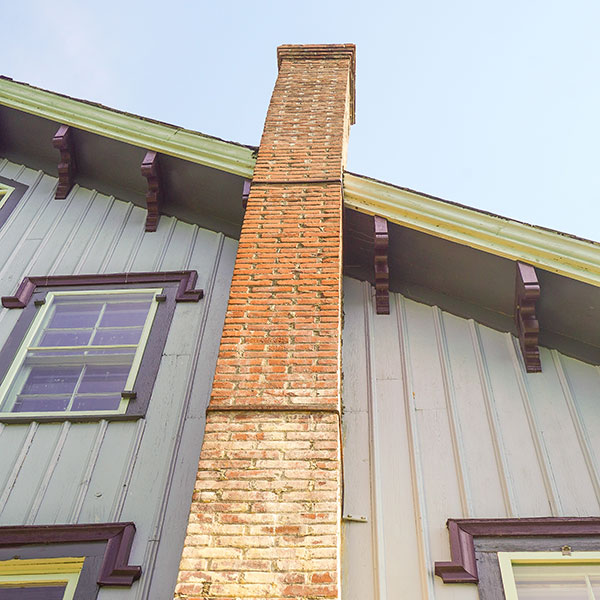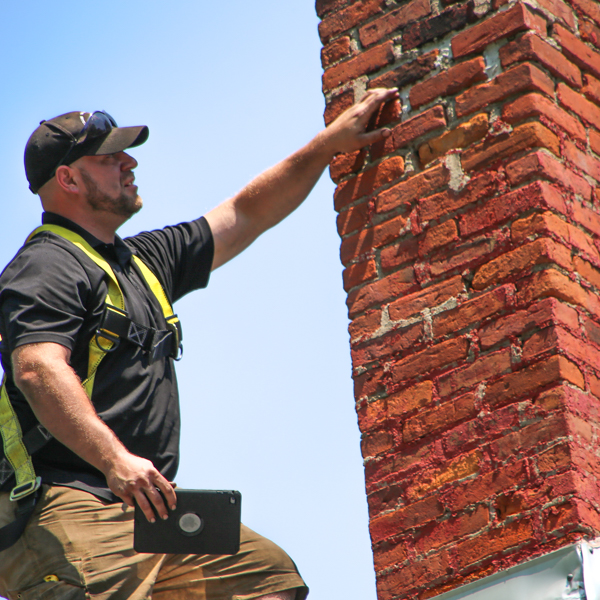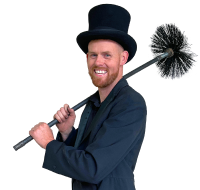Why is My Chimney Leaning?
A sturdy, well-maintained chimney adds character to a home and ensures your fireplace operates efficiently and safely. However, time and weather take their toll and can cause damage like brick spalling and leaning. In this post, we look at what causes a chimney to lean, how to repair it, and how to prevent it.
 What Causes a Chimney to Lean?
What Causes a Chimney to Lean?
In our experience, chimney leaning is primarily caused by foundation issues, but other factors contribute to the problem too.
Poor Construction
The life expectancy and efficiency of any masonry structure rely heavily on how well-built it was in the first place. The truth is that not all masons have the same experience and skill. And, while it’s not right, some cut corners or use inferior materials to finish the job more quickly.
Masonry Damage
As mentioned, the weather takes a toll on your chimney. Twenty-four-seven exposure to wind, snow, rain, and ice, and freezing and thawing cause the mortar joints to wear out and the bricks to crack. If these issues aren’t resolved as soon as possible, the bricks will loosen, causing the chimney to become unstable and eventually lean.
No, or Poor Foundation
Chimneys need a solid concrete footing to support their weight. Unfortunately, many chimneys were constructed with no or poor foundations. Over time, the chimney’s weight causes it to sink slowly into the ground and pull away from the house, which can cause the chimney to lean and eventually collapse.
Shifting Soil
Another issue related to the foundation is poor construction. If the contractor didn’t sink the footing deep enough, shifting soil from excess moisture, poor drainage, or nearby construction could cause the foundation to become unstable.
How to Repair a Leaning Chimney
If your chimney leans, it’s essential to fix it as soon as possible before it collapses. Depending on the damage’s severity, we use several methods to repair a leaning chimney. In our experience, one of the most effective repairs for a leaning chimney is putting piers on each side of the chimney and one in the rear. The back pier lifts the foundation to bring the chimney back to its original position. This works for most situations; however, in cases where there are significantly damaged bricks or mortar joints, the only solution is to completely rebuild the chimney.
How to Prevent a Leaning Chimney
The old saying goes, “An ounce of prevention is worth a pound of cure.” While it’s impossible to prevent chimney leaning if there’s no foundation or if it’s been neglected, there are steps you can take to minimize or prevent the damage, and here’s how.
Regular Maintenance & Inspections
Most chimney problems are easily preventable if you stay on top of routine maintenance and inspections by a certified professional. Our technicians have the experience and training to spot potential issues like deterioration that could lead to a leaning chimney and fix them before it happens.
Proper Construction & Design
If you’re installing a fireplace, hiring an expert mason to design and construct the chimney to ensure it sits on a solid foundation is essential. Reputable masons use high-quality materials and build systems that conform to current codes and regulations to ensure the best outcome.
 Maintain Adequate Drainage
Maintain Adequate Drainage
As mentioned, one reason chimneys lean is because of poor drainage. To keep water away from the chimney’s foundation, direct your downspouts far enough away from the foundation to prevent soil erosion and shifting.
Call Hudson Valley Chimney Inc.
Hudson Valley Chimney Service is the number one choice for professional chimney and fireplace services in the valley. We’ve proudly served homeowners in the area since 1976. Whether you have a leaning chimney or need routine cleaning, inspections, maintenance, or waterproofing, you can count on our certified professionals. Call us today to book an appointment at 845-471-1071.





